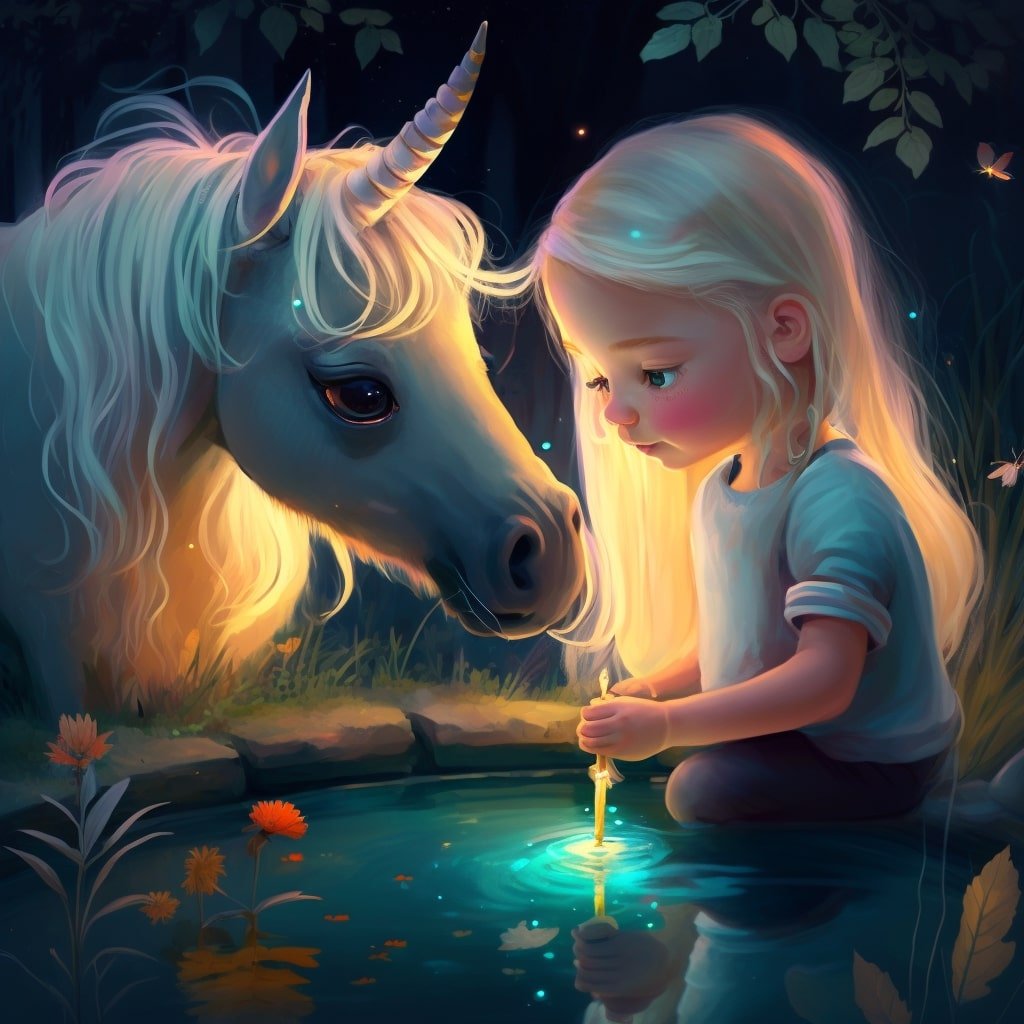Enchanted by Unicorns: Exploring the Fascination of Unicorn Stories
How unicorns fascinate children through unicorn stories.
Fantasy stories always captivate children's imaginations and the dominant figure would always be a unicorn. Unicorn stories have become a popular trend in storytelling. As a matter of fact, some unicorn stories have garnered the title of best-selling bedtime stories for kids. It's not hard to see why this is the case since unicorns are always associated with a friendly nature which creates a unique connection to its young readers. and unicorn stories often lead to a happy ending. Most authors of children's stories prefer to create unicorn stories due to their positive aura whereas using a dragon or some other mythological creature may become violent which would not be appropriate for your kids. Unicorn stories also enhance children's imagination through the magical adventures that it offers as unicorn stories mostly jump from one place to another and exploring those new places is exciting for children. When reading some other bedtime stories no longer interest your child, try reading them unicorn stories to make bedtime stories fun once more.
Unicorns and unicorn stories have never been more fascinating since it was first documented. Though they are not as easily caught as described by some historians, their nature and majesty are easily contained in many unicorn stories that we hear nowadays.
Throughout history, the legend of the unicorn has captivated the hearts and minds of people. A mythological creature resembling a horse with a horn on its forehead – sometimes depicted as winged horses – can be found in ancient histories of various civilizations. While unicorns are generally considered fictional creatures, some skeptics believe they might have been real animals that once roamed the Earth. This belief led to searching for evidence of a creature once thought elusive. Among all the mythological beings, the unicorn stands out as the most beloved and appealing to kids and adults. Their positive aura and the happiness associated with unicorn stories make them a favourite. In modern times, unicorns have become symbols of pop culture, with their distinctive appearance and vibrant backgrounds fascinating to anyone who catches a glimpse. Familiar unicorns like Buttercup from Toy Story, the rainbow unicorn from Inside Out, Lady Rainicorn from Adventure Time, and even the unicorn toy given by Gru to Agnes in Despicable Me are easily recognizable and relatable, especially for children.
Unicorn and Unicorn Stories Earliest Historical Records
Around 400 BC, the Greek historian Ctesias provided the first descriptions of unicorns. He depicted them as horse-sized creatures with white bodies, purple heads, blue eyes, and a horn on their foreheads. This horn was said to be a cubit long, with a red tip, black middle, and white base. It was believed that drinking from this horn offered protection against stomach troubles, epilepsy, and poison. The ancient Greek bestiary, Physiologus, described unicorns differently, portraying them as strong and fierce animals that could only be tamed by placing a virgin maiden before them. In the 15th century, unicorns gained popularity and symbolized royalty and power. The Scots of Scotland used the unicorn as a counter symbol to the English lion, believed to be the unicorn's natural enemy. After introducing unicorns, unicorn stories followed that have evolved into more magical images and descriptions. Unicorn stories since then have captivated the imagination and interest of children.
The Unicorn stories as we know them today
Today, unicorn stories have returned to their friendlier image and have captured children's hearts. Unicorns are omnipresent in books, cartoons, and movies. Unicorn-themed books are a hit with children, not only due to the colorful portrayal of these creatures but also because they offer exciting adventures through reading. Some notable unicorn stories include "Thelma the Unicorn" by Aaron Blabey, "The Last Unicorn" by Peter S. Beagle, and "You Don't Want a Unicorn!" by Ame Dyckman. These stories are just a glimpse of the captivating unicorn tales your children would adore.
It's easy to understand the allure of unicorns. Their vibrant appearance quickly grabs attention, while their friendly and positive nature invites audiences to partake in the magic of their unicorn stories.
